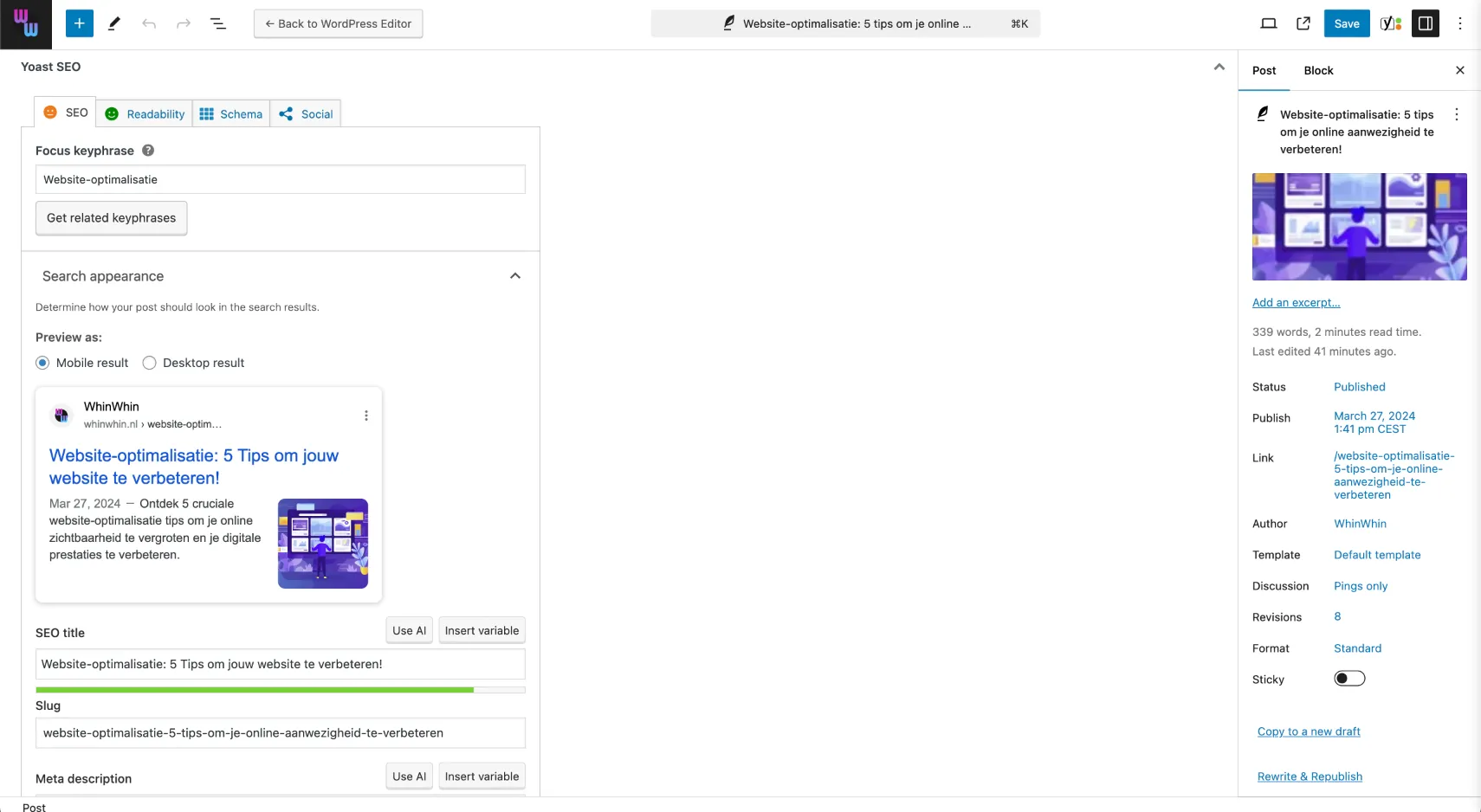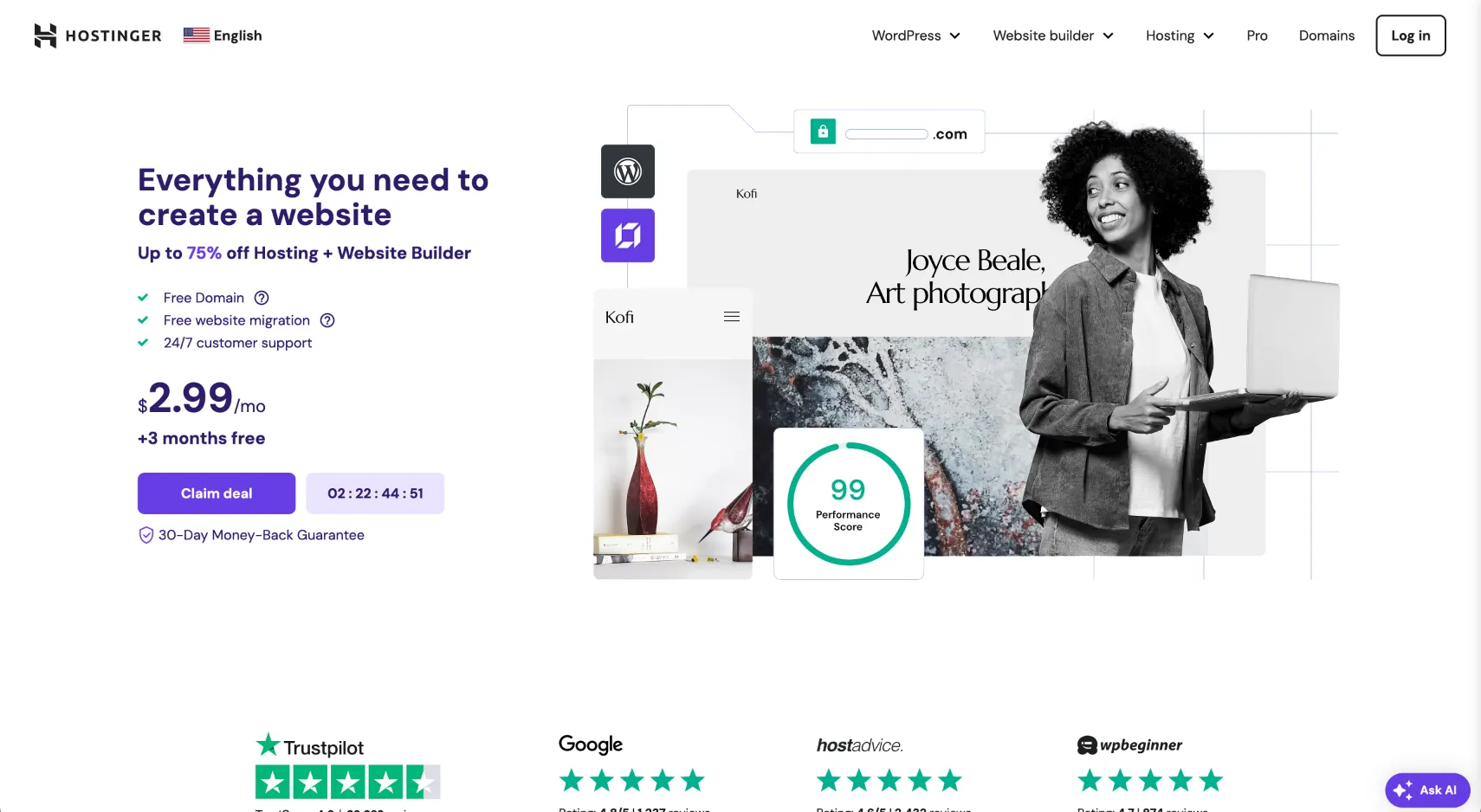The 5 points to optimize your WordPress website.
As a dedicated Web Design and Web Development studio, we understand how crucial it is for companies to have a strong online presence. That is why we would like to share some valuable tips to optimize your website and increase your online success. Website optimization starts by taking the tips below into account.
1. Performance is key

2. Responsive webdesign
Make sure your website performs well across all devices, from desktop to mobile. A responsive design ensures that your website looks good and works well regardless of the device being used. In addition, your website will also be rated better by Google, which will help with the next point, SEO.
3. SEO (Search Engine Optimization)
Optimize your website for search engines by using relevant keywords, optimizing metadata and publishing valuable content regularly. Consider image and page metadata. This will help your website rank higher in Google search results and attract more organic traffic.
An essential tool to optimize your WordPress website is the YOAST SEO plugin. This plugin offers a comprehensive set of tools and features that will help you improve your site’s SEO performance. Here are some key aspects in which YOAST SEO can support you:
Relevant Keywords:
YOAST SEO helps you pick the right keywords for your content. It provides suggestions for keywords relevant to your niche and shows how well your page is optimized for these keywords. Additionally, the plugin allows you to check keyword density to prevent over-optimization.
Metadata Optimization:
YOAST SEO allows you to easily customize titles and meta descriptions for every page and blog post. This metadata plays a crucial role in how search engines index your website and display it in search results. The plugin provides real-time feedback and scoring, so you know exactly where you can make improvements.
Content Analysis:
The plugin analyzes your content for readability and SEO-friendliness. YOAST SEO checks things like the length of sentences, the use of subheadings, and the presence of transition words. This not only helps with SEO, but also ensures that your content is comfortable to read for your visitors.
Optimization of Images:
It’s important to optimize the metadata of your images as well. YOAST SEO reminds you to add alt text that is descriptive and includes relevant keywords. This not only improves the accessibility of your website, but also contributes to SEO.
XML Sitemaps:
YOAST SEO automatically generates an XML sitemap for your site. A sitemap is a map of your website that helps search engines locate and index all your pages. This is essential for good SEO and ensures that your content is indexed more quickly and efficiently.
Internal Links:
The use of internal links is important for both SEO and user experience. YOAST SEO provides internal link suggestions as you write your content so you can easily add related articles. This helps build a strong internal link structure, which helps search engines better understand your pages’ context and relevance.
By using the YOAST SEO plugin you can systematically optimize your website and ensure you follow all SEO best practices. This results in better visibility in search engines, more organic traffic and ultimately a higher conversion.

4.Clear Call-To-Actions (CTAs)
5. Analyze and optimize
Contact us today for a free consultation!
We are ready to help you implement these tips and optimize your website for maximum impact and success online.





